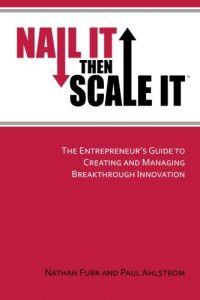
Simplifying boosts customer adoption and reduces costs. Consumers are drawn by simplicity and confused by complexity. Simplifying the product doesn’t imply that you are neglecting the customer’s choice. Rather it conveys that you precisely know the customers well enough to deliver the exact solution they are searching for.
Moreover, by developing something simple instead of something complex, a startup saves time and money. Oftentimes an engineering-focused organisation believes they have to deliver every feature to every customer, whereas on the contrary, a market-driven business focuses on determining its primary customer and developing the right product that nails the customer’s problem.
3 other things to remember,
1. Too much funding may not help you survive :
Deep within, we all know that money alone will not fulfil all the necessities to build a flourishing business. Overflow of money may even lead to complacency, damaging your entrepreneurial spirit, whereas a startup with frugal funding might know better what’s necessary and gets it done.
2. Customer’s needs come first :
A significant misconception of entrepreneurs is of solely relying on “the perfect idea” and their passion for it. Without understanding what your customers want, there’s a small chance it will ride the market. The knowledge you gain about what your customers want will build the base for your success.
3. Use of a tested business model to scale adequately :
Aim for a solid business model that is supported by paying customers. Scaling without a reliable customer foundation is rash. Remember, at some point, you will require external help to scale it.
90% of businesses fail because they can’t get anyone to buy it, not because they can’t build it. Here are 3 misconceptions of entrepreneurship:
The Hero Myth – We all hear the same set of qualities: passion, determination and vision. But these same qualities that are regarded as traits for success may lead your startup to major setbacks. Overdriven entrepreneurs can madly fall in love with their product, as a result, ignore negative feedback from consumers and waste years developing a product based on a vision that no one else shares.
The Process myth – “build it and then sell it” process doesn’t work because entrepreneurs start out with guesses/assumptions. Entrepreneurs must seek the right problem and the right solution.
The Money Myth – More money isn’t always better. Investment gradually eliminates the constraint of entrepreneurs requiring to focus obsessively on customer’s wants.
# Key Takeaways:
– The importance of finding a “nail it” product-market fit before scaling a business
– The need for continuous customer validation and iteration in the early stages of a business
– The importance of a strong founding team and their ability to pivot and adapt
– The concept of “customer development” and its role in creating a successful business
– The importance of focusing on a specific target market and their needs
– The role of a minimum viable product (MVP) in testing and validating a business idea
– The importance of creating a scalable business model from the start
# Practical Application:
The concepts and strategies presented in Nail it Then Scale it can be practically applied in real-world scenarios by following the step-by-step process outlined in the book. This includes conducting customer interviews, creating a MVP, and continuously validating and iterating on the product based on customer feedback. Additionally, the book emphasizes the importance of having a strong founding team and their ability to pivot and adapt, which can be applied in any business scenario.
# Valuable Insights for Leaders and Managers:
The chapters that offer the most valuable insights for individuals in leadership or management roles are “The Power of Customer Development” and “The Art of the Pivot”. These chapters delve into the importance of understanding and continuously validating customer needs, as well as the ability to pivot and adapt in order to find a successful product-market fit.
# Case Studies and Examples:
Nail it Then Scale it includes several case studies and examples that effectively illustrate its principles. These include the success stories of companies like Dropbox, Airbnb, and Zappos, as well as the failures of companies like Webvan and Kozmo. These real-world examples provide a clear understanding of the concepts and strategies presented in the book and how they can be applied in different business scenarios.
Leave a Reply